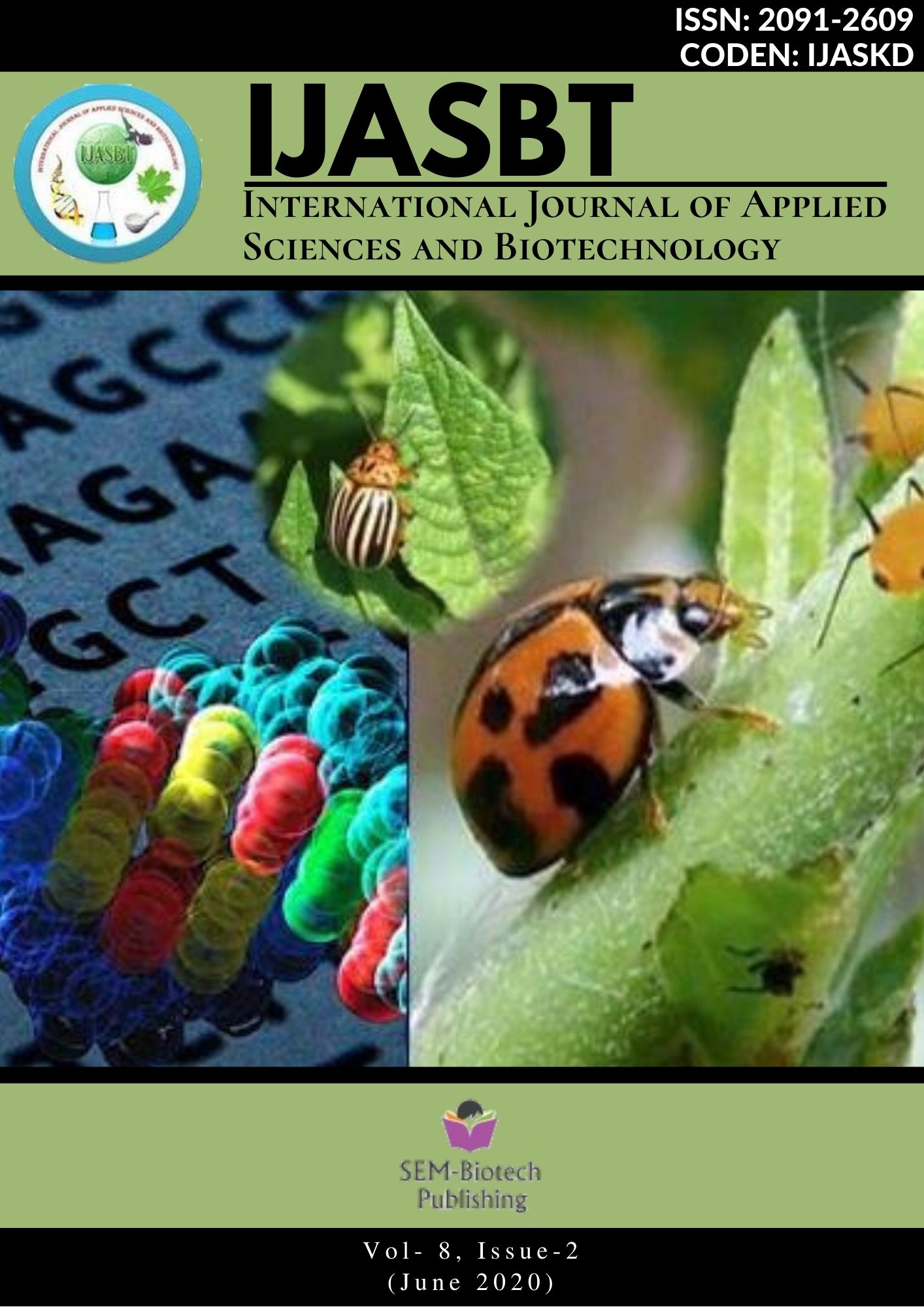Campylobacter Infection and its Sensitivity in Retail Pork
DOI:
https://doi.org/10.3126/ijasbt.v8i2.29587Keywords:
antibiotic resistance, Campylobacter, pork, NepalAbstract
Food safety and security are serious concerns to the world. The growing population, depleting resources demand that judicious production is key and ensuring that the product is safe from the farm is a collective responsibility. Pork is the source of most consumed animal protein on the planet. Concerns of various type from chemical residues, environment pollution and source of pandemic diseases have challenged the growth of the pork industry. There is strong correlation between contamination of pork by pathogens like, Campylobacter, Salmonella, Toxoplasma gondii, Listeria monocytogens, Staphylococcus aureus, Trichinella spiralis and human health hazard. The purpose of this study is to outline the possible risk factors, antibiotic susceptibility pattern, prevalence, possible reason behind high prevalence and developed resistance and possible control measures for Campylobacter spp. (C. coli and C. jejuni). The risk factor analysis-based research clearly indicated that possible contamination is due to unhygienic slaughtering, evisceration and processing practices. Prevalence is more in the retail meat of Nepal than other countries. The commonly used antibiotics in Nepal are not fully sensitive. The developed resistance might be due to overuse or misuse of antibiotics which may lead to post antibiotics era. Strict slaughtering procedure, HACCP (hazard analysis and critical point) and GMP (good manufacturing practices) during slaughtering are prerequisities for Campylobacter control in carcass. We need to focus through individual, policymaker, health professional level for enhancement of pig industry with strict biosecurity measures at farm level of Nepal.
Int. J. Appl. Sci. Biotechnol. Vol 8(2): 132-139




